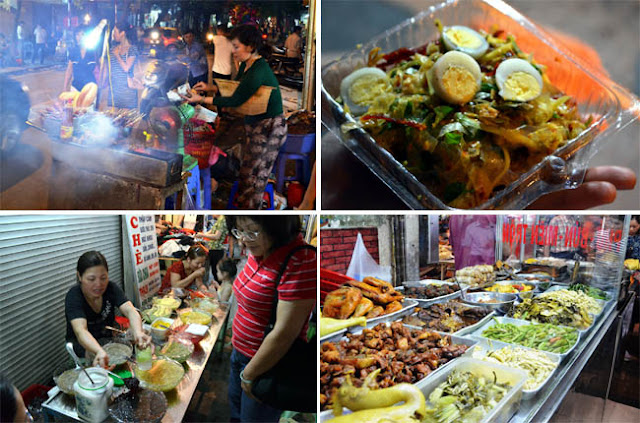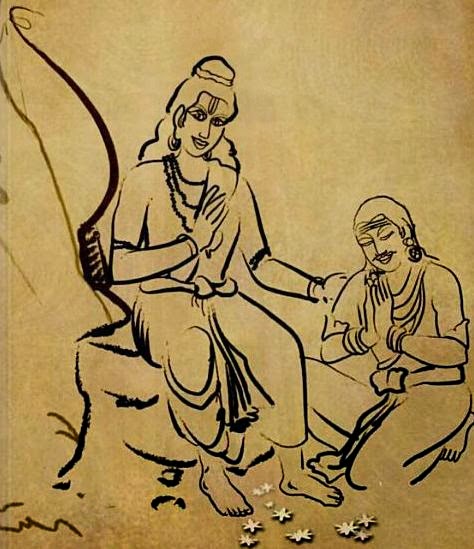We stayed in Hanoi for three days. We tried many local Hanoi dishes, and we strongly recommend the top three on our list- Hanoi beef noodle, Vietnamese spring roll, and Vietnam coffee.
Beef noodle soup is a must try food in Hanoi, unless beef is not your favorite. In local, the noodle made of rice is called 'Pho' (pronounce as fur in English). The common name for the dish is Pho-Bo (beef noodle soup). However, the name of the dish is much more specific in Hanoi.
Around Old Quarter, instead of pho-bo, we found pho-tai (noodle soup with half done beef fillet), pho-tai-gao (noodle soup with half done brisket beef), pho-chin (noodle soup with well done beef), and many more. The taste, varied from a place to another. Among these shops, Pho 10 served the best pho-bo. The shop is located at Ly Quoc Su, near to Ly Quoc Su Temple and St. Joseph Cathedral. The pho served by the shop was really nice. Plus, friendly staff, clean environment with air conditioned, and with reasonable price. We stopped at Pho 10 after visiting St. Joseph Cathedral. The review of this shop is available at Tripadvisor.
Pho 10 from the outside (upper left). The vivid outlook makes it easy to be seen. The shop is clean and tidy (upper right). The cooks are taking care of the order (lower left), and in less than 10 minutes, hot pho-tai was served.
Next, the spring roll. What is so special about the spring roll? The recipe. Spring roll is widely available in our country as well, which more commonly refereed as popiah. But the spring roll with seafood, pork, raw vegetable such as onion, mint leaves, tomato, that's authentic. Rainbow Restaurant offered nice spring roll. The location, Hang Hanh Road nearby Hoan Kiem Lake, some 50 meters away from our hotel- Hanoi Old Centre Hotel.
This is how the restaurant looks like from the outside (upper left) and from the inside (lower left). We have two options- steamed (upper right) or fried.
Vietnam coffee has a special taste. That makes the coffee "Vietnam coffee" (ouch).We tried Vietnam coffee at many places, before we stepped into Trung Nguyen outlet nearby Hoan Kiem Lake. That was our last night at Hanoi. We ordered Black Vietnam coffee and weasel coffee at the outlet. The coffee were served with single cup drip filter.
Trung Nguyen outlet nearby Hoan Kiem Lake (upper left). The another side of the outlet is used as tourism information centre. We bought several packets of Trung Nguyen coffee from the outlet (lower left), and took the opportunity to enjoy the world class coffee.
Then, the street food. Many hawkers selling food and drinks at the road side. The choice is ours. The food hygiene is always our biggest concern when we talk about street food. From what we could see, the street food served around Old Quarter were safe to be consumed. You will see more street food at the night market on Fridays, Saturdays and Sundays. We tried several dishes, including the kebab, che, sweet corn, lemon tea, and banh trang tron (pronounced as barn-chan-tron).We found very nice banh trang tron at 38, Hang Tron Road.
Street food is almost everywhere in Old Quarter, especially around the night market (upper left). Banh trang tron is a mixture of rice paper with salad and egg (upper right). Che is sort of ais batu campur in our country (lower left). It contains a mixture of fruits, sago, green beans, red beans, and ice. Chinese food is quite hard to find. The one that we tried somewhere near the night market was quite expensive. A combination of stewed pork, steamed chicken, and vegetable cost USD 5 per person.
Refreshing lemon tea at the road side, in front of St. Joseph Cathedral.Photo taken with Smile (lady in pink on the left), one of our tour guides from HanoiKids. We would like to thank Thu for taking this photo for us.
We tried several other types of noodles. We found that the beef noodle soup is still the best around Hanoi.
Overall, Hanoi has enough authentic local food that keep us attracted. So, we didn't really visited any fast food outlets, or opt for Western food. Overall, we found that food at Hanoi taste good, and a bit similar to Chinese food.
We stayed at Old Quarter area, so we could reach various of Vietnam food by foot. For the food lovers, staying somewhere within the Old Quarter Area might be a good idea. The food in Hanoi was not expensive. The noodles served in restaurants were between 40,000d - 60,000d (RM6.40 - 9.50/ USD2.10 - 3.10). Street food such as che and banh trang tron were available at 20,000d (RM3.20/ USD1.10). Lemon tea at the road side of St. Joseph Cathedral was served with 10,000d (RM1.60/ USD 0.52) per glass. Fresh fruit juices were served 30,000 per cup (RM5/ USD1.60). The price for the food and drinks were listed in Vietnamese Dong. So, bringing Dong would be more convenient compared to US Dollar.
We will share more about our family trip at Hanoi with HanoiKids next.
[Exploring Hanoi Old Quarter] [Ho Chi Minh Mausoleum and Places Nearby]
[Food in Hanoi] [HanoiKids, the Ambassador of Hanoi]
[Amazing Ha Long Bay Cruise Experience]
[Vung Vieng Fishing Village at Ha Long Bay]
[Food in Hanoi] [HanoiKids, the Ambassador of Hanoi]
[Amazing Ha Long Bay Cruise Experience]
[Vung Vieng Fishing Village at Ha Long Bay]






























